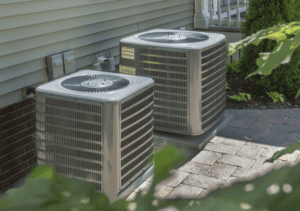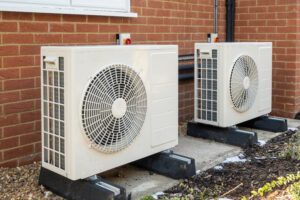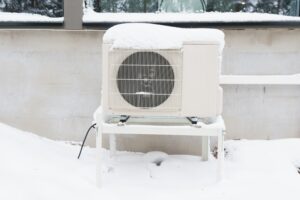No matter what temperature you set your thermostat to, humidity can quickly make your entire home feel extremely uncomfortable. In the Kansas City Metro Area, summers can be quite humid, and many homeowners may start to notice humidity levels rise in their homes. Cates Heating and Cooling has a few tips for how you can lower the humidity in your home.
1. Use a Dehumidifier
The most obvious way to lower the humidity in your home is to use a dehumidifier. You know it is time to get a dehumidifier if your indoor humidity levels are above 65%. You can purchase an inexpensive portable option, or you can invest in a whole-home dehumidifier.
2. Make Sure You Have Proper Ventilation
In some households, exhaust fans and windows aren’t properly utilized, which can lead to an increase in the humidity level in your home. Bathrooms and kitchens tend to be the rooms that most contribute to additional indoor humidity. Running exhaust fans when you cook or shower can prevent humidity levels from increasing too much. Additionally, opening the windows when there is increased moisture in your home can help.
3. Be Mindful of House Plants
House plants can both help and hinder attempts to decrease humidity levels in your home. First, make sure that you don’t have too many plants in your home. Plants release moisture into the air, and overwatered plants are even more likely to release excess moisture. If you have a lot of plants, you might be adding a lot of moisture into the air of your house. You can also alternate between having your plants inside the house and then outside.
Another option is to choose your plants wisely. Some plants do a really good job removing moisture from the air. Boston ferns are good for moisture renewal. Since plants also remove carbon dioxide from the air, you can rest assured that your moisture-removing plants are doing double duty for you.
4. Dry Your Clothes
Hanging wet laundry indoors can lead to excess moisture in your home—especially in rooms with poor ventilation. To prevent wet clothes from having an impact on the humidity in your home, dry what you can in a dryer and hang other garments outside to dry.
5. Reduce Excess Moisture
Like we mentioned, showers and cooking can add moisture into your home. Shorten your showers as much as possible and avoid boiling water when you are cooking. Both of these activities can make your home feel much more humid. If you have to do either, be sure to ventilate the area as much as possible. Low-flow showerheads can also help reduce the amount of moisture getting into the air of your home.
6. Replace or Repair Doors and Windows
Windows and doors with drafts can cause cold moisture to build up in your home, which will raise the humidity levels in your house. You may need to weatherproof your windows and doors. Adding plastic film to the glass and caulking around the windows can really help reduce drafts.
If moisture starts to build up between the panes of your windows, you will want to consider replacing the windows altogether. The same goes for your doors.
To learn more about having a whole-home dehumidifier installed in your home, contact Cates Heating and Cooling today at 913-888-4470.



















